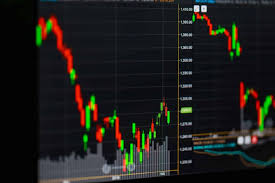Understanding Automatic Forex Trading Strategies and Benefits 1510299079

Automatic forex trading has revolutionized the way traders engage with the forex market. With technology moving at a rapid pace, traders are now using algorithms and trading software to automate various aspects of their trading strategies. This article delves into the intricacies of automatic forex trading, offering insights into its strategies, benefits, and implementation practices. For more information on trading solutions, visit automatic forex trading latam-webtrading.com.
What is Automatic Forex Trading?
Automatic forex trading, often referred to as algorithmic trading, involves the use of computer programs or scripts to enter and exit trades in the forex market. These programs can analyze market patterns, execute trades at optimal times, and manage positions automatically, minimizing the human element in trading decisions. This type of trading can be particularly advantageous in the fast-paced and volatile forex market, where reaction time can determine significant profits or losses.
The Mechanics Behind Automatic Trading
The basic framework of automatic forex trading relies on algorithms that follow predefined rules. These rules may encompass a range of factors, including market indicators, price levels, and the trader’s risk tolerance. The algorithms analyze vast amounts of market data to identify trading opportunities and execute trades based on those pre-established parameters.
Types of Automated Trading Strategies
When it comes to automatic forex trading, traders utilize various strategies tailored to their market outlook and risk preferences. Here are a few common strategies:
- Trend Following: This strategy involves identifying and following the direction of market trends. The algorithms make trades based on momentum indicators, buying when prices are rising and selling when they are falling.
- Mean Reversion: Mean reversion strategies operate under the assumption that the price of a currency pair will return to its average over time. Automated systems can capitalize on price discrepancies by opening positions when prices are far from their historical averages.
- Arbitrage: Arbitrage trading exploits discrepancies between different markets or currency pairs. Automated systems can quickly identify and execute trades, harnessing the power of speed to make profitable trades before the market corrects itself.
- News Trading: Certain algorithms are programmed to react to news events. For instance, a sudden economic announcement can lead to drastic market movements, and automated trading systems can be set to enter or exit trades at these crucial moments.

Benefits of Automatic Forex Trading
Implementing automatic trading systems in forex offers numerous advantages, including:
- Emotion-Free Trading: One of the primary benefits of automated trading is the elimination of emotional decision-making. Traders often make impulsive choices based on fear or greed, which can lead to significant losses. Automated systems follow stringent rules, thus preventing emotional interference.
- Backtesting Capabilities: Before deploying a trading strategy, traders can backtest their algorithms using historical market data. This allows them to evaluate the effectiveness of their strategies and make necessary adjustments before risking capital in live markets.
- 24/7 Availability: Unlike manual trading, automated systems can operate around the clock. This is particularly beneficial in the forex market, which is open 24 hours a day, five days a week. Trading opportunities can be seized even when the trader is unavailable, maximizing potential profits.
- Speed and Efficiency: Automated trading systems execute orders much more quickly than any human trader could. This speed can be especially crucial in volatile markets, where prices can change dramatically in seconds.
Challenges and Considerations
While automatic forex trading brings substantial benefits, it is not without its challenges. Traders should be aware of the following:
- Technical Failures: Automated systems rely on technology, and any failure in the system—such as power outages, internet connectivity issues, or software glitches—can lead to significant losses.
- Market Adaptability: Markets are not static; conditions can change rapidly. A trading algorithm that worked well in a specific market environment may not perform effectively in different conditions. Continuous monitoring and adjustments are crucial.
- Over-Optimization: Traders often fall into the trap of over-optimizing their algorithms based on historical data. While backtesting is useful, over-reliance on historical performance can lead to poor results in live trading.
Getting Started with Automatic Forex Trading
For those interested in exploring automatic forex trading, here are some steps to get started:
- Research: Educate yourself about the various methodologies, strategies, and tools involved in automated trading. There are numerous resources, forums, and courses available that delve deeper into the subject.
- Select a Trading Platform: Choose a reliable trading platform that supports automated trading. Popular platforms include MetaTrader 4 and 5, which offer extensive automation features.
- Develop or Choose a Trading Strategy: Decide whether you want to develop your own algorithm or use pre-existing strategies. Custom algorithms require programming skills, while many platforms provide user-friendly options for those less technically inclined.
- Demo Testing: Before risking real money, utilize demo accounts to test your automated strategies. This allows you to see how your algorithm performs under live market conditions without the financial risk.
- Monitor and Adjust: Automated trading does not mean a hands-off approach. Continuous monitoring and periodic adjustments based on market conditions will enhance your system’s performance.
Conclusion
Automatic forex trading presents a transformative approach for traders looking to enhance their trading efficiency, reduce emotional influences, and capitalize on market opportunities. By understanding the strategies, benefits, and potential challenges, traders can successfully navigate the world of algorithmic trading. As technology continues to evolve, the potential for maximizing gains through automated systems remains vast, making it an attractive option for both new and experienced traders alike.
